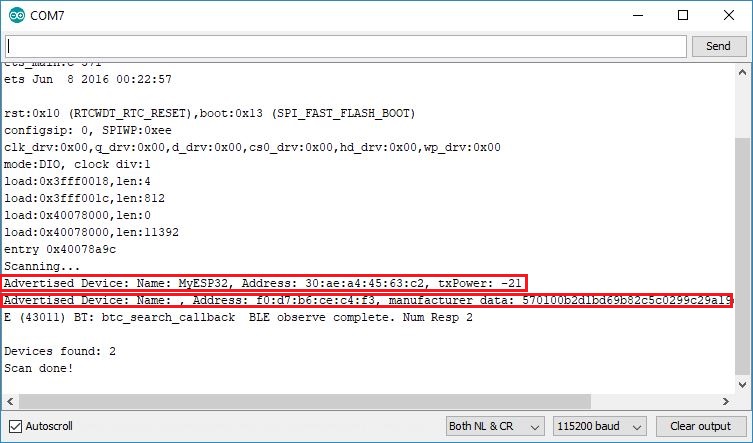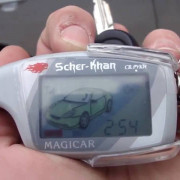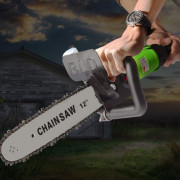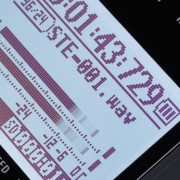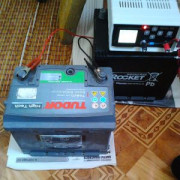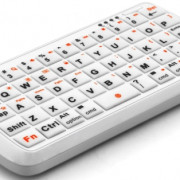Chirp
Содержание:
CHIRP: Linux install
The Ubuntu/Linux Mint/Debian install (I installed it on Mint) is not very different from the Windows 10 one (for screenshots, see the Windows install above):
- After plugging in the USB cable, issue these commands to download and install CHIRP:
- After installation is complete, run CHIRP;
- Select the “Radio” menu and then “Download From Radio” (Alt+D);
- Choose your radio settings: the serial port (for me it was “/dev/ttyUSB0”), the vendor (“Baofeng”) and the model (“UV-5R”);
- At the warning “Proceed with experimental driver?”, click “Yes” to continue;
- Follow the instructions on hooking up the radio:
1. Turn radio off;
2. Connect cable to mic/spkr connector;
3. Make sure connector is firmly connected;
4. Turn radio on (volume may need to be set at 100%);
5. Ensure that the radio is tuned to channel with no activity;
6. Click OK to download image from device; - The image will now be downloaded from your radio (a.k.a. “cloning”).
- You can now use the downloaded image as template. You can edit it and save multiple versions to disk, or upload an image back to your tranceiver.
Note: if you get an “Access denied” error when accessing the serial port, you need to add your username to the dialout group. For instance, when your username is “johndoe” you should issue the command:
Yaesu Radios¶
Note: A number of ham radio dealers sell the RT System’s software and alongside the radios. This gives the false impression that the software and cable are from Yaesu rather than a 3rd party which is a bit misleading. Some RT System’s cables such will NOT work with CHiRP under Windows or Mac OS without some additional driver or chip configuration. See FTDI OEM Cables. Therefore, RT System’s cables aren’t recommend for use with CHiRP.
VX-2R, VX-3R, VX-5R, VX-6R, VX-7R, FT-60R
These handhelds use the same type of cable, which is a four-pin TRRS connector and a TTL voltage converter in the 9-pin housing.
VX-8R, VX-8DR
The VX-8R and VX-8DR both use a moisture-proof multi-pin screw-on connector at the top of the housing. It is recommended that you find a third-party programming cable for this radio. This radio expects 3.3Vdc signalling. Using a 5Vdc adapter could possibly damage the radio. Note the VX-8G radio with the built-in GPS, uses an entirely different serial connection, see below
NOTE: RT System’s cable will NOT work with CHiRP under Windows or Mac OS without some additional driver or chip configuration. See FTDI OEM Cables.
- VK4GOL’s instructions. Uses FTDI modules to build a serial cable.
- VX-8 Connectors: RT Systems sells a DIY cable with the correct proprietary end for the VX-8 without the USB serial adapter for a very reasonable price. Note: it is not waterproof or moisture resistant, like
VX-8GR
The VX-8GR uses a three-conductor 3/32″ plug directly to an RS-232 port. This is the same cable that Kenwood APRS radios use for the GPS connection, and almost the same as the Icom OPC-1529 type data cable, except that a null modem adapter must be used to switch the TX and RX pins.
FT-4, FT-65
These radios use the Yaesu SCU-35 cable. It is a USB-to-serial cable with a Prolific PL2303 USB-to-serial ship. It is supported by the unmodified drivers USB in Windows and Linux. The cable uses 3.3 V voltage levels and is a two-wire cable, with GND on one wire and TxD and RxD wired together on the other wire. It plugs into the radio’s «MIC» jack using a 2.5mm TRS plug.
Cable Buying Advice¶
In some cases, the manufacturer of your radio produces the highest quality cable for programming. However, these are usually the most expensive and are not always the most convenient (because of a lack of USB, etc). The exception to this are the very low cost USB cables that come with many Chinese radios that use a counterfeit Prolific USB to serial chip that has a number of driver problems with recent versions of Microsoft Windows. These cables generally work ok with Linux.
Third party cables are available for most radios with a range of costs and quality. The low cost cables use counterfeit Prolific USB chips. If you use Microsoft Windows, finding the right driver and keeping it working can be quite a chore. Saving $10-15 on a cable might cost you a good bit of time and frustration trying to get it all to work.
Cables that use only a 9-pin serial connection take a lot of guesswork out of the equation. With such a cable, you can choose your own (or try many) USB adapters to get a working setup. In reality, this is a much safer option as you only have to find a solid USB adapter once, and you can use it with many cables. The KeySpan USA-19HS is a very solid USB adapter that has many benefits and is not sold under another name, nor does it use a variety of chips as do many other cables. Anything with a REAL Prolific or FTDI chip should be fine as well.
How to figure out which cable to buy
Recommendations for purchasing a USB radio programming cable:
- Avoid USB programming cables that appear to be based on the Prolific PL-2303 USB chip. This is the chip that has been cloned/counterfeited in the Chinese cables. The early clones were fairly unreliable. Because of the counterfeiting, Prolific has taken the step of making their newest drivers attempt to detect the counterfeit chips and refuse to work with them. Recent versions of Microsoft Windows (7 and later) will automatically update to the latest Prolific driver. This can make a cable stop working at some point after it is installed. <br /> Look at the driver instructions for references to PL-2303. Also another clue is that there will be many different drivers listed to try if one doesn’t work.
- Cables based on the FTDI USB chip are recommended. FTDI makes a high quality USB to serial chip that has a good, working driver built in to many operating systems. The FTDI chip can add $10-15 to the cost of a USB programming cable, but will save time and frustration with driver issues. Look for cables that specifically mention FTDI. Another clue is that the cables are advertised to work with Windows 7 64-bit. Some of the 3rd party cable manufacturers, such as BlueMax49ers and Valley Enterprises, have switched to using only the FTDI chip after having too many problems with the Prolific clones.
- RT Systems cables are not recommended for use with CHiRP. While RT Systems sells high quality USB programming cables that are based on the FTDI chip, these cables may or may not work with CHiRP and any other software that except the cable to show up as a generic serial (COM) port. The RT Systems cables use a custom ID. With some work it is possible to get the RT Systems cable to show up as a generic serial devices, see FTDI OEM Cables.
- Note: For some radios such as Yaesu, the RT Systems cable and software are sold alongside the radio as if they were made by the manufacturer rather than a 3rd party. A number of ham radio dealers don’t make it easy to distinguish that the software and cable are actually from a 3rd party.
- If you can’t tell what chip the cable uses, look for a different cable.
There are a few reputable manufacturers of 3rd party cables that are known to be high-quality in the community. If you’re looking for a cable, check the following:
- BlueMax49ers on eBay (Mark is a regular supporter of CHIRP)
- Valley Enterprises
- KAMAMALL
Baofeng¶
UV-3R
The UV-3R uses a Prolific USB-to-serial chip, but users report that in Windows, you must use drivers from http://409shop.com. It works out of the box on Linux.The PLUS model of the UV-3R uses a Kenwood/Wouxun cable (same as the UV-5R) instead of the original single plug cable used by the UV-3R and UV-3R Mark II. All models (thus far) of the UV-3R use the same software.
Miklor Site’s Baofeng DIY
UV-4X
The UV-4X is a rebadged UV-3R Mark II and uses the single connector cable. The radios themselves are made by Vero Telecom
UV-5R
The UV-5R is made by TYT, uses a Kenwood/Wouxun cable, and does not use the same protocol as the UV-3R models.
Miklor Site’s Baofeng DIY
CHIRP: Windows 10 install
The Windows 10 install is pretty straightforward:
-
- After plugging in the USB cable, download the latest Windows installer (“chirp-daily-xxxxxxxx-installer.exe”) from the CHIRP download page;
- Run the installer, ignoring the Windows Defender warnings. After installation is complete, run CHIRP (from the application menu);
-
Select the “Radio” menu and then “Download From Radio” (Alt+D);
-
Choose your radio settings: the COM (USB) port (for me it was “COM5”), the vendor (“Baofeng”) and the model (“UV-5R”);
- At the warning “Proceed with experimental driver?”, click “Yes” to continue;
-
Follow the instructions on hooking up the radio:
1. Turn radio off;
2. Connect cable to mic/spkr connector;
3. Make sure connector is firmly connected;
4. Turn radio on (volume may need to be set at 100%);
5. Ensure that the radio is tuned to channel with no activity;
6. Click OK to download image from device; -
The image will now be downloaded from your radio (a.k.a. “cloning”).
-
After the image is downloaded you can use it as template. You can edit it and save multiple versions to disk, or upload an image back to your tranceiver.
Icom Radios¶
The following links are outdated, and we haven’t yet found replacements for them; the Highfieldfs Amateur Radio Club in Cardiff UK is now at http://highfields-arc.com, but apparently their cable pages are gone.Instructions for building your own OPC-478 / OPC-552 / CI-V cables can be found here: http://highfields-arc.co.uk/constructors/other/opc478.htm Circuits are shown for both an RS-232 version with a level-converter as well as a using an inexpensive USB module.
VHF/UHF Mobiles
Nearly all of these radios use an OPC-478 (or similar) cable, which plugs into the speaker jack of the radio. The housing of the 9-pin connector has TTL conversion logic, which can be home-built but it is typically easier to buy one pre-made. Note that some of the mobile D-STAR radios can also use their data connection for programming, which uses RS-232 signalling and requires no conversion hardware. Models that can do this include the IC-2820H, ID-880H, and ID-80.
IC-91AD, IC-92AD, ID-1
These radios operate in «live» mode and require a full-duplex RS-232 serial cable connection. For the IC-91AD, the OPC-1529 cable is used (and can be easily built).
The 92AD uses a moisture-proof custom bayonet connection at the top of the radio, which is only available from Icom (OPC-1799) and only with their RS-92 programming software. Note that the OPC-1797 adapter cable will not allow you to use an OPC-478 programming cable with this radio.
The ID-1 is programmed via its integrated USB connection.
IC-Q7A
For some reason, this radio doesn’t use the standard three-conductor plug on the OPC-478. The cable for the Yaesu VX-7 actually works perfectly though.
Making your own cables¶
It is possible to build your own radio programming cable. Most radios use a serial interface for programming, however the voltage levels used varies. RS-232 Serial ports used voltage variations of up to -15Vdc to +15Vdc which was good for older equipment and long cable runs. Modern low voltage electronics tends to use signalling levels of 0-5Vdc, or 0-3.3Vdc. Be sure you know what voltage levels your radio expects before connecting anything. RS-232 voltage levels can damage your radio if it is expecting to see a max of 3.3Vdc or 5Vdc. Older radios with built-in TNCs or those otherwise designed to connect directly to a computer use RS-232 voltages. However these radios are becoming more and more rare. Most modern radios have a low voltage port connected directly to the radio’s microcontroller for cloning and memory programming. Research «voltage level converters» for how to convert between the different types of signalling.
USB Serial cables that provide RS-232 ports usually include both a USB to low-voltage serial chip and a level converter. However, bare USB to serial adapters are available that provide 0-5Vdc or 0-3.3Vdc signalling from a number of companies targeted at microcontroller programmming and other do-it-yourself hobby/electronics activities. Building a USB programming cable for your radio can be as easy as selecting the appropriate USB adapter with the right voltage for your radio and soldering on the proper cable.
